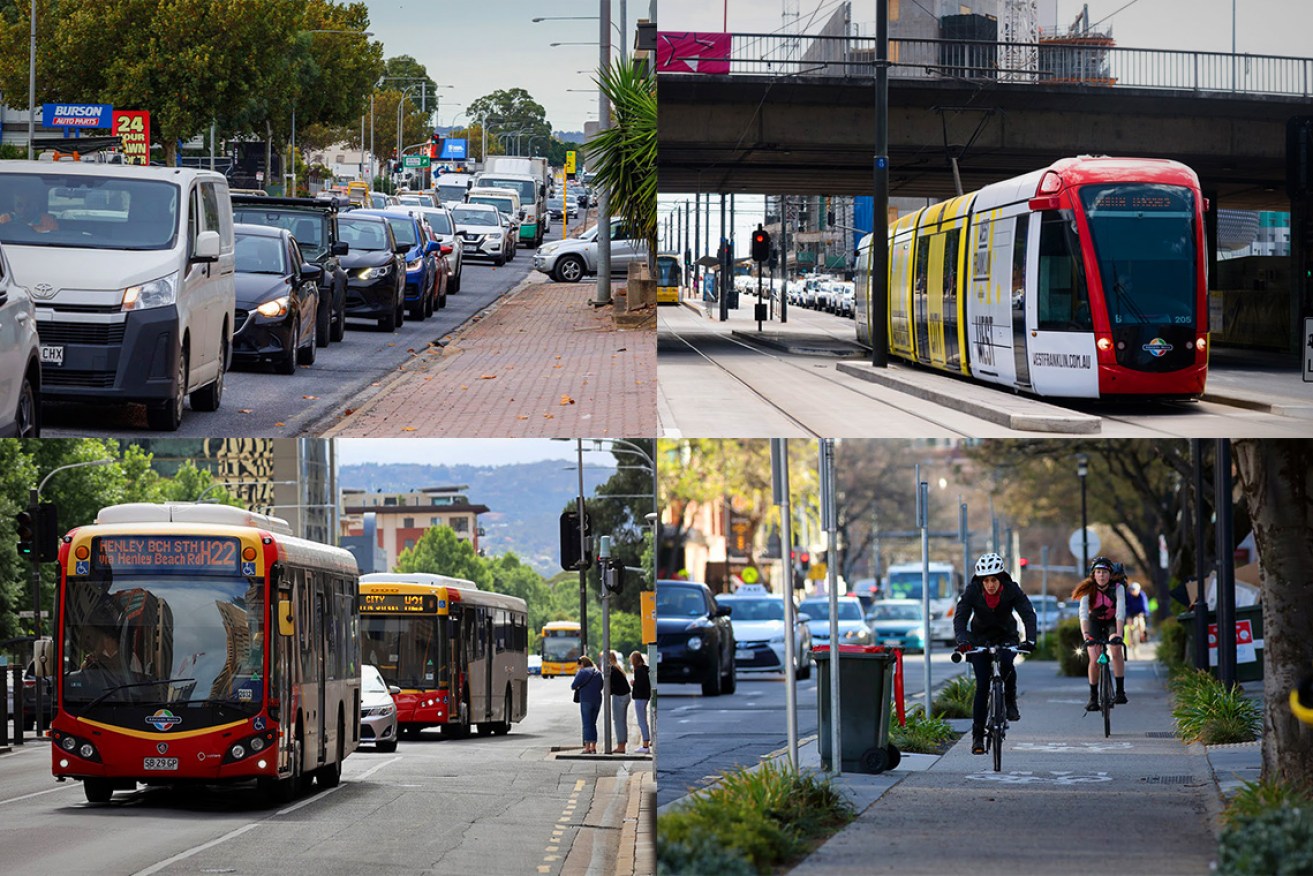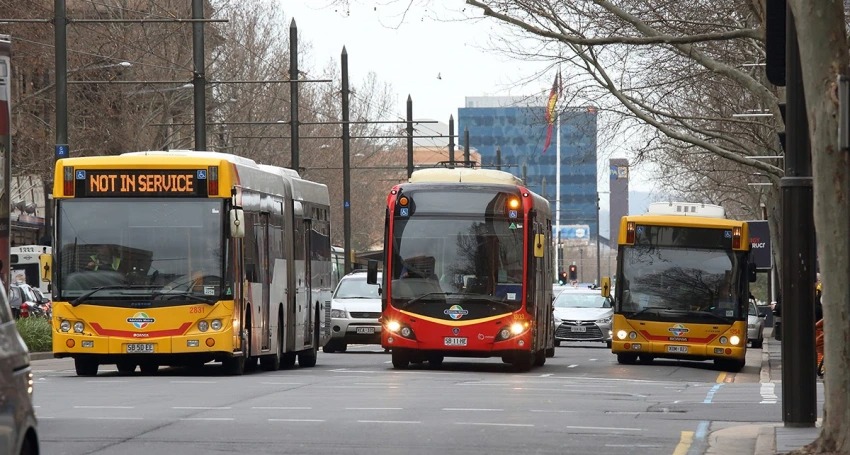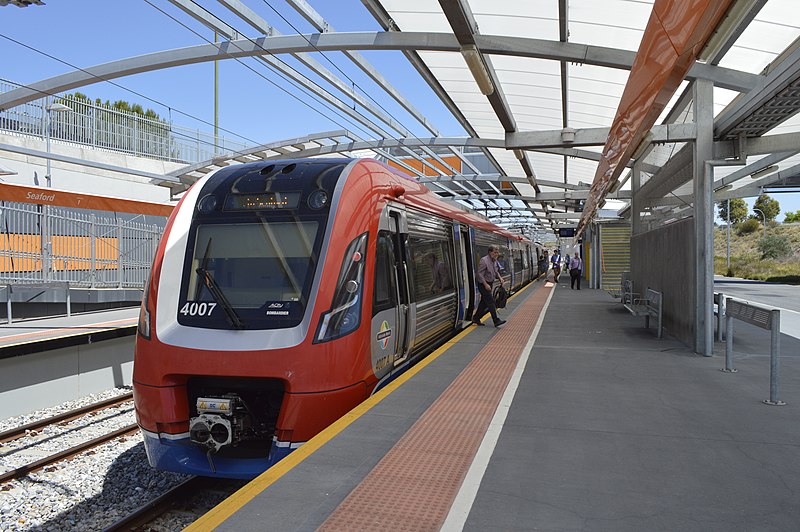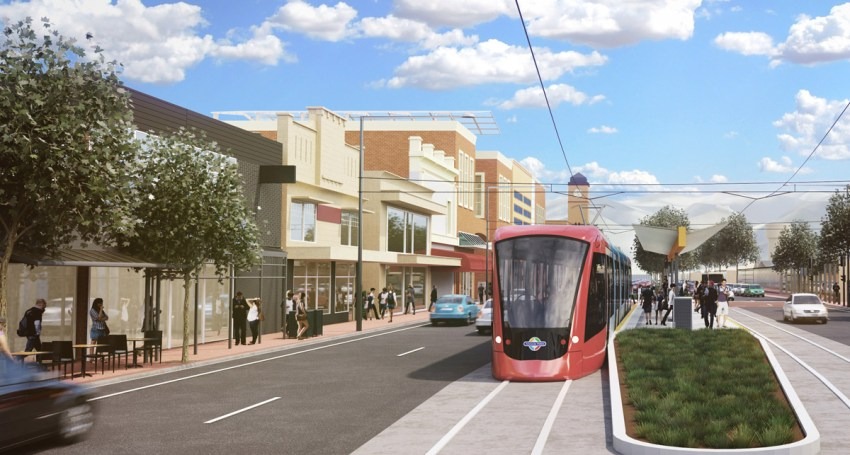Adelaide’s public transport problems under microscope
The State Government’s independent infrastructure agency is mapping out a strategy for South Australia’s next 20 years of infrastructure investment. But will it improve Adelaide’s public transport network?


Photos: Tony Lewis/InDaily
Infrastructure SA released a discussion paper earlier this month seeking input on South Australia’s next 20-Year State Infrastructure Strategy.
The strategy, scheduled for completion in late 2024, is intended to guide State Government infrastructure decisions until 2045.
The first 20-year strategy was completed in May 2020, although state and federal governments have faced criticism for not following its recommendations.
This year’s discussion paper outlines how the world has changed since 2020 and points to “megatrends” – namely climate change, digital transformation, an ageing population, global instability and a “push towards an inclusive society and economy” – that Infrastructure SA believes will impact South Australia’s future.
The paper also poses questions about how Adelaide’s public transport can be improved and what can be done to better account for climate change in new infrastructure.
Ultimately, over the long term, we need to see some mode shift towards public transport so we are less reliant on cars.
But advocates for public and active transport have criticised the framing of the paper, arguing it is guiding respondents towards a “car-centric” response to South Australia’s transport and climate change challenges.
The paper does not propose any major extensions to Adelaide’s train or tram network.
It does, however, float the idea of redesigning Adelaide’s bus network for “better cross-suburban connectivity and modal integration”, saying this could “encourage a greater modal shift towards public transport and make it the option of choice”.
“Adelaide’s public transport network is reasonably good at connecting the suburbs to the CBD during peak commuter periods and providing high coverage service to those with limited choice,” the paper states.
“Future planning and designs should aim to optimise the utilisation of the road network through maximising the use of public transport.”

Buses in the Adelaide CBD. Photo: Tony Lewis/InDaily
Transport data prepared for the paper highlights Adelaide’s reliance on cars: 71 per cent of commuters in Greater Adelaide used a private vehicle to get to work in 2021.
That’s compared to just 5.51 per cent who chose public transport and 2.04 per cent active transport (walking and cycling).
Public transport patronage also fell significantly during the pandemic and is yet to recover.
Nearly 810,000 fewer trips were taken on Adelaide’s trains, trams and buses in July 2023 when compared to July 2019, according to Transport Department data provided to the ABC last month.
Infrastructure SA CEO Jeremy Conway said increasing the mode-share of public transport in Adelaide would depend on ensuring services are “as efficient as possible and as easy as possible for people to use”.
“I think ultimately, over the long term, we need to see some mode shift towards public transport so we are less reliant on cars,” Conway told InDaily.
“But the reality is Adelaide is very much a car-based city, so we need to make sure that those road networks work efficiently but find reasons for people to either shift to public transport or even a greater uptake of active transport in terms of cycling and walking.
“I think that not only makes the network work more efficiently (but) improves liveability and helps address some of the decarbonisation objectives as well.”
Conway suggested that improvements to existing public transport services should be prioritised in the immediate term over significant new infrastructure investments like rail extensions.

An Adelaide Metro electric train running along the Seaford line. Photo: Wikimedia Commons
He said some of Adelaide’s rail lines and trunk bus routes are “pretty significantly underutilised”.
“I think all infrastructure planning needs to look at how we might be able to improve the service without investing and building new stuff first,” he said.
“Obviously, to reach populations and catchments as Adelaide grows, we might need to consider some new investments.
“But I think there’s a lot of work to make sure that we sweat our assets harder.”
The former Weatherill Labor Government made an election promise in 2018 to extend Adelaide’s tram network to North Adelaide and Norwood – infrastructure investments worth $259 million and $279 million respectively.
But the two projects were scrapped by the Marshall Liberal Government, which also privatised Adelaide’s passenger trains and trams.

An artist’s impression of the scrapped plans for a tram line to the Parade. Image: supplied
So far, the Malinauskas Government has not committed to any network extensions that match the scale and ambition of the Norwood and North Adelaide projects. Indeed, the current government’s most significant, and only, rail extension is a $56.4 million spur line to Port Adelaide.
Meanwhile, the government has flagged its intention to rezone significant swathes of greenfield land in the outer suburbs for new housing, including in areas not currently connected to rail transport.
“Locating people in outer suburbs and on the outskirts of our cities without providing quality public transport means affordable housing will not translate to affordable living,” said Jennifer Bonham, a spokesperson for public transport advocacy group the Transport Action Network.
“Failure to provide public transport has the obvious cost of households having to buy and operate multiple vehicles to access employment and services as well as social, civic, and cultural opportunities.
“This at a time of rising fuel costs. Electric vehicles may address the fuel cost component in years to come but they do not address the purchase and maintenance costs of the vehicles.”
Bonham, who is also an adjunct senior research fellow at UniSA, said Infrastructure SA’s discussion paper ignores “time, money, and stress” costs associated with car travel.
She also highlighted the transport problems Mount Barker continues to experience nearly 13 years after 1300 hectares of local farmland was rezoned for new housing.
“Transport is a significant ongoing issue at Mt Barker and we are at serious risk of repeating the mistakes made in providing housing without appropriate supply of public transport or ensuring local employment,” she said.
“If we are not prepared to provide public transport to outer- and peri-urban areas then we need to re-consider releasing the land.”
The Malinauskas Government has pledged to release land for more than 25,000 new homes across Sellicks Beach, Aldinga, Hackham, Noarlunga Downs, Dry Creek, Golden Grove and Concordia.
Infrastructure SA’s discussion paper does mention the challenge of servicing outer suburban and regional communities with public transport.
The paper suggests on-demand bus services, such as the Keoride trials occurring in Mount Barker and the Barossa Valley, are a potential solution.
“Servicing growing communities on the outskirts of the city and in our regional cities and towns remains a challenge, as delivering public transport in lower density areas costs more per capita,” the paper states.
“Approaches such as on-demand bus services… can support greater levels of uptake for public transport in a more-cost effective way than investing in new infrastructure.
“When coupled with urban design and active travel modes, demand can be reduced for private car usage.”
Meanwhile, the RAA said it will make a submission to Infrastructure SA about the next 20-year strategy.
The state’s peak automotive body said it has previously advocated for “critical road network improvements” in the plan.
“It is vital that South Australia’s roads and infrastructure continue to improve and keep pace with population growth – to improve the liveability and productivity of our state,” said Emily Perry, RAA general manager of community and corporate affairs.
“This is also an opportunity for us plan the much-needed investment in the climate resilience of our communities and infrastructure.”
Consultation on the discussion paper ends on November 13.




